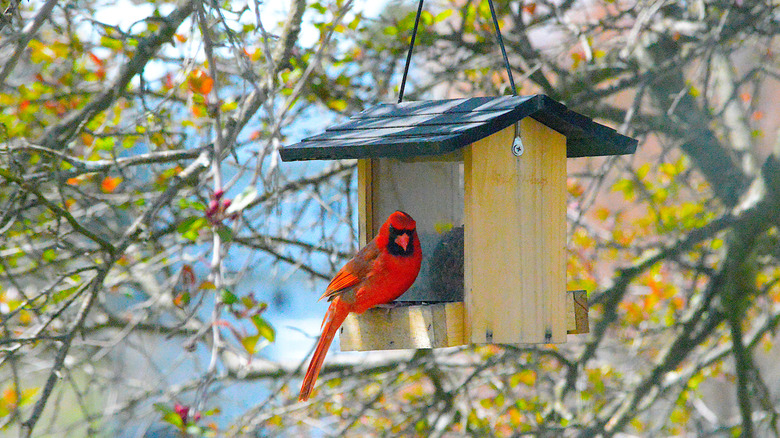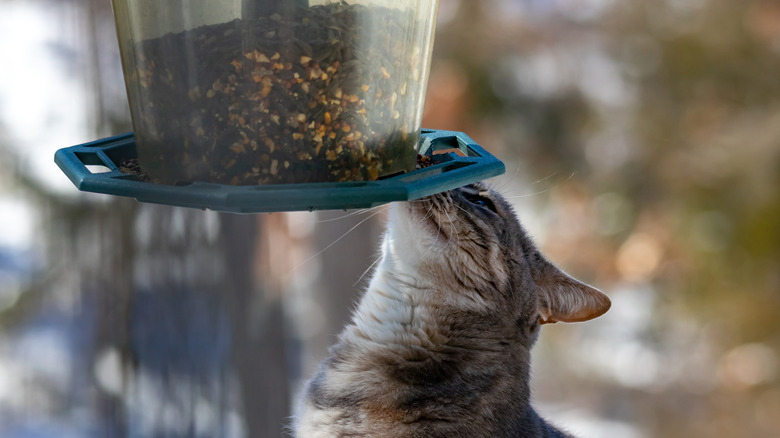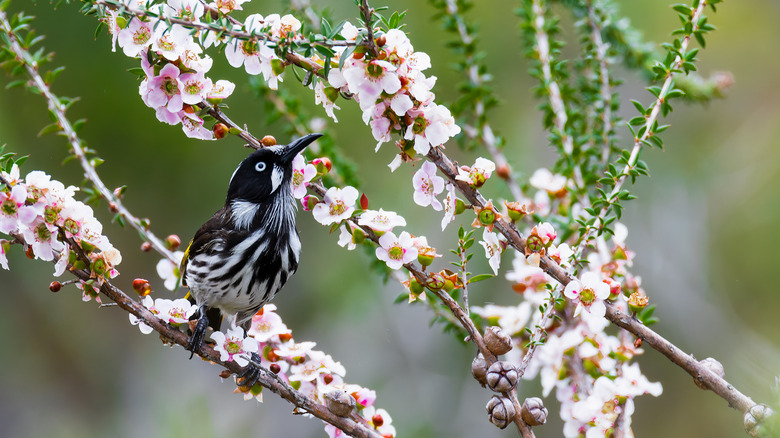The Hidden Dangers Of Hanging A Bird Feeder In Your Yard
We may receive a commission on purchases made from links.
Although wild birds can't really be tamed and kept as pets, you can enjoy their presence from afar by placing a bird feeder in your yard. Not only does this provide the wildlife with a food source, it also serves as excellent environmental enrichment for your cats or dogs. For your indoor animal companions, watching a bird feeder from the windowsill can provide hours of enjoyment as they spot the different avian species flitting to and fro.
Knowing what birds frequent your feeders, as well as tracking their migration patterns, can help you determine when to put the dispensers up in the fall and take them down in the spring. Moreover, researching which foods are best for the avian varieties that frequent your feeder, along with which birds can eat thistle seed, can also provide the right food diversity for wild flocks.
Though bird feeders may seem like a great way to aid natural avian populations, they aren't always the best option for providing food for wild birds. Behind that idyllic scene, there are some hidden risks that may have you reconsidering if a bird feeder is a good idea in the first place. Disease, predators, and window collisions are all factors to consider that could have you thinking twice. Thankfully, there are some steps you can take to help mitigate the potential drawbacks.
How bird feeders can spread disease
Because bird feeders bring together different species, they can be a major spreader of disease among wild flocks. This includes issues such as avian pox. The area can also become a breeding ground for bacteria, with salmonella and conjunctivitis the most commonly spread. Sonia Hernandez, an associate professor of wildlife disease at the University of Georgia, explained to "Nature", "From the standpoint of disease acquisition and transmission, having a high density of diverse species that are not related is kind of a recipe for disaster."
By keeping the space around feeders clean, you can cut back on possible issues. Products like Microbe-Lift's Bird Feeder Spray can help reduce the spread of pathogens. Sweeping up dropped food around the feeder can also keep wild birds and other animals from accidentally eating spoiled feed. In turn, this can prevent critters such as rats and mice from moving in. If you do notice sick birds, removing the feeders and thoroughly sanitizing them is best.
Windows and predators can injure wild birds
Beyond the increased risk of disease, feeders present the possible danger of wild bird injuries. Feeders that are placed too close to windows may cause birds to misjudge where to land, leading to collisions caused by window surfaces reflecting what appears to be open space. If you're planning to place a bird feeder near your home, protect your windows by adding tinted film, such as Coavas One Way Window Privacy Film, that darkens the pane to prevent potential accidents. Other reflective items, such as wind chimes, may help to deter birds from flying into objects. Screens and awnings can also be placed over windows to make them less reflective.
Predators can be another cause of injury to wild birds. Having too many avians gathered in one spot can entice animals such as cats and hawks to hang about looking for an easy meal. If you see any other creatures lurking around, remove the bird feeders temporarily to discourage them.
Landscaping can provide entertainment without bird feeders
If would rather not deal with the risks of a bird feeder, there are other ways to bring feathery animals into your backyard. Wildlife-friendly landscaping is one of the best options for encouraging birds to frequent your property with fewer dangers. It also helps provide migrating birds with shelter and enrichment.
Filling your garden with plants that provide wild food for birds can encourage them to forage and follow natural behaviors. It's best to research what plants are native to your area before adding them to your yard. It's also helpful to add layers to your landscaping, such as low bushes with tall trees, to provide refuges for many different bird species. Plants that produce food in different seasons can also incorporate visual variety and extra sources of nutrients.



